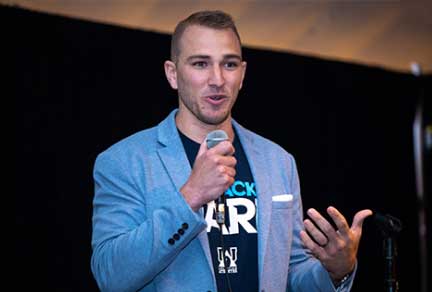Regulatory outsourcing: Applying change management best practices for smoother transitions
Despite the significant shift in the commercial and regulatory landscape in 2025, companies remain committed to their established outsourcing and continue to expand the specialized support of their regulatory affairs (RA) activities. Transitions, whether a straightforward functional shift (e.g. CMC writing services) or a complex multi-regional transformation (e.g. full asset outsourcing), demand meticulous planning and execution. A key consideration is a clear focus on change management, particularly when undertaking large-scale regulatory outsourcing transformations.
Navigating complex regulatory outsourcing transitions
More than a simple handover of tasks, transitioning regulatory activities to an outsourcing partner involves a complex transformation that permeates various aspects of an organization. There are multiple function and people-related changes, numerous process-related modifications and a fundamental shift in organizational mindset.
To navigate this complexity successfully, organizations must consider not only the scope of the transition but also the intricate interplay of cultural and operational factors. The transition process requires a holistic approach that addresses the multifaceted nature of change, from revising standard operating procedures (SOPs) to redefining many types of roles and their new responsibilities.
In our experience, the value of implementing stage gates (checkpoints) cannot be underestimated, which we will explore in a subsequent article. These stage gates serve as crucial validation points, ensuring that each phase has delivered against the defined parameters before progressing to the next stage. This methodical approach can mitigate risks and allow for necessary adjustments along the way.
Implementing a phased approach to transition
To ensure a smooth and successful transition, a multi-stage approach that balances thoroughness with efficiency is always our recommendation. This begins with change management setup, progresses through program setup and onboarding, includes a pilot program, and culminates in a phased transition.
Stage 1 : Change management setup
Inaccurate scoping or rushing the change management phase often delivers an outsourcing program with long-running inefficiencies and ‘change resistance’ from stakeholders.
It's essential to recognize that change management is not a one-time event but an ongoing process that should be embedded throughout the transition and beyond.
Key takeaway: The set-up stage is intensive and depending on complexity can last up to 3 months, with extensive involvement from regulatory senior leadership and stakeholders. This investment of time and resources sets the tone for the entire transition, ensuring that the human aspects of change are given as much attention as the technical and operational elements, increasing the likelihood of a successful transition.
Stage 2: Program setup and onboarding
As organizations progress beyond initial change management, they enter the critical phase of program setup and onboarding. This stage is pivotal in establishing the foundation for a successful regulatory outsourcing transition, with knowledge transfer at its core.
Transferring knowledge from the organization to a partner is a nuanced process that goes beyond sharing documents. It involves conveying years of accumulated expertise, understanding of regulatory landscapes, and detailed decision-making processes.
As this knowledge flows, attention turns to codifying information into SOPs and Work Instructions (WIs), often through a collaborative effort.
Simultaneously, organizations must establish clear governance structures, communication channels, escalation pathways and carefully chosen key performance indicators (KPIs) to measure the success of outsourced activities, reflecting both operational efficiency and quality compliance.
The human element remains central, and comprehensive training programs should be developed to equip the regulatory outsourcing partner’s personnel with necessary skills and knowledge. Technology plays an integral role in this process, not just as a supporting element but as a key facilitator of consistent and efficient knowledge transfer. Nowadays, almost all data is digitized and in integrated systems, which means the focus shifts to effectively transferring non-document information, which is crucial for a comprehensive handover. A good regulatory outsourcing partner needs to ensure seamless access to both structured data (systems) and tacit knowledge, creating a robust foundation for the partnership. This is essential in bridging the gap between explicit, documented information and the more nuanced, experience-based insights that are vital for successful regulatory outsourcing transition.
Key takeaway: The setup and onboarding stage is a readiness check for both biopharma company and regulatory outsourcing partner with particular attention areas such as business continuity and clear governance processes (e.g., Escalation Pathways and Conflict Resolution procedures). Focusing on these areas ensures a smooth transition and prevents important tasks and issues from being overlooked.
Stage 3: Pilot program
The pilot program serves as a crucial test of the new operating model. During this stage, a comprehensive subset of activities within agreed parameters and governance structures should be undertaken. This allows for close monitoring of performance against the established KPIs and provides an opportunity to identify and address any inefficiencies in quality, process, or communication.
Key takeaway: In our experience, the pilot program is more than a trial run; it is an integral part of the transition process. Lessons learned during this stage inform refinements to the operating model and transition approach, ensuring greater success in subsequent phases.
Stage 4: Phased transition
The move into the ‘physical transition’ stage involves a carefully orchestrated, phased transition of regulatory activities to the regulatory outsourcing partner.
Typically, the first phase of transition will focus on a subset of assets into the new operating model for a small list of markets before expanding the transition to include remaining countries/expanded scope of services, building on the lessons learned from the initial phase.
Throughout each phase, continuous monitoring and improvement are essential. Organizations must identify and close any inefficiencies, whether they relate to quality, process, or communication.
Key takeaway: In our experience, a gradual transition or phased expansion allows for the refinement of processes and the resolution of any country-specific challenges, enabling a smoother transition of even the most complex regulatory activities.
The importance of continuous improvement
A successful transition marks the beginning of a new operating model. Embedding a culture of continuous improvement is crucial for long-term success in regulatory outsourcing. Periodic change readiness assessments are required to ensure that the new ways of working are being effectively adopted and internalized. Continuous improvement also necessitates the establishment of formal processes for capturing and evaluating improvement suggestions from all stakeholders. Regular performance reviews against established KPIs provide valuable insights into areas requiring attention or optimization.
Additionally, it is crucial for the ongoing evaluation of a partner’s capabilities against emerging requirements to ensure that the outsourcing partnership remains capable of meeting the organization's regulatory needs.
Conclusions
Transitioning regulatory affairs activities to a regulatory outsourcing partner is a complex undertaking that requires careful planning, execution, and ongoing management. By adopting a phased approach with embedded change management principles, organizations can navigate this transition successfully.
A well-executed transition, coupled with a commitment to continuous improvement, can lead to enhanced regulatory capabilities, improved efficiency, and ultimately, better outcomes for patients worldwide. As organizations embark on this journey, they must remain mindful of the intricate interplay between process changes, technological adaptations, and most importantly, the human elements of change.
To discuss your regulatory outsourcing needs, please get in touch. We’re always available for a conversation.
Disclaimer: Parexel provides this information for educational purposes only. It does not constitute legal or regulatory advice. Readers should not act upon this information without seeking advice from professional advisers.
Related Insights
Article
Maximize the efficiency of regulatory operations with five key competencies
Jul 23, 2021
Webinar
Accelerated Early Phase Decision-Making – Insider Insights to Speed Development
Jan 7, 2025
Playbook
The upward trend of FSP outsourcing
Sep 29, 2022
Article
Future proofing your outsourcing strategy
Mar 18, 2025
Video
Identifying the right FSP candidates on day one
Aug 9, 2021
Report
Fit-for-purpose outsourcing models: Adapting to a world of untapped innovation and emerging risks
Jun 20, 2025
Playbook
Strategic outsourcing redefined: Building partnerships that propel innovation
Dec 5, 2025
Podcast
CAR-T boxed warnings: What comes next?
Mar 6, 2024
Blog
Assessing the need for comparative clinical trials in biosimilar development programs
Sep 21, 2023
Report
New Medicines, Novel Insights: Advancing rare disease drug development
May 22, 2023
Report
New Medicines, Novel Insights: Accelerating development of cell and gene therapies
May 22, 2023
Webinar
Assessing appropriate use of ECAs in clinical trials
May 28, 2023
Related Insights
Article
Maximize the efficiency of regulatory operations with five key competencies
Jul 23, 2021
Webinar
Accelerated Early Phase Decision-Making – Insider Insights to Speed Development
Jan 7, 2025
Playbook
The upward trend of FSP outsourcing
Sep 29, 2022
Article
Future proofing your outsourcing strategy
Mar 18, 2025
Video
Identifying the right FSP candidates on day one
Aug 9, 2021
Report
Fit-for-purpose outsourcing models: Adapting to a world of untapped innovation and emerging risks
Jun 20, 2025
Playbook
Strategic outsourcing redefined: Building partnerships that propel innovation
Dec 5, 2025
Podcast
CAR-T boxed warnings: What comes next?
Mar 6, 2024
Blog
Assessing the need for comparative clinical trials in biosimilar development programs
Sep 21, 2023
Report
New Medicines, Novel Insights: Advancing rare disease drug development
May 22, 2023
Report
New Medicines, Novel Insights: Accelerating development of cell and gene therapies
May 22, 2023
Webinar
Assessing appropriate use of ECAs in clinical trials
May 28, 2023



